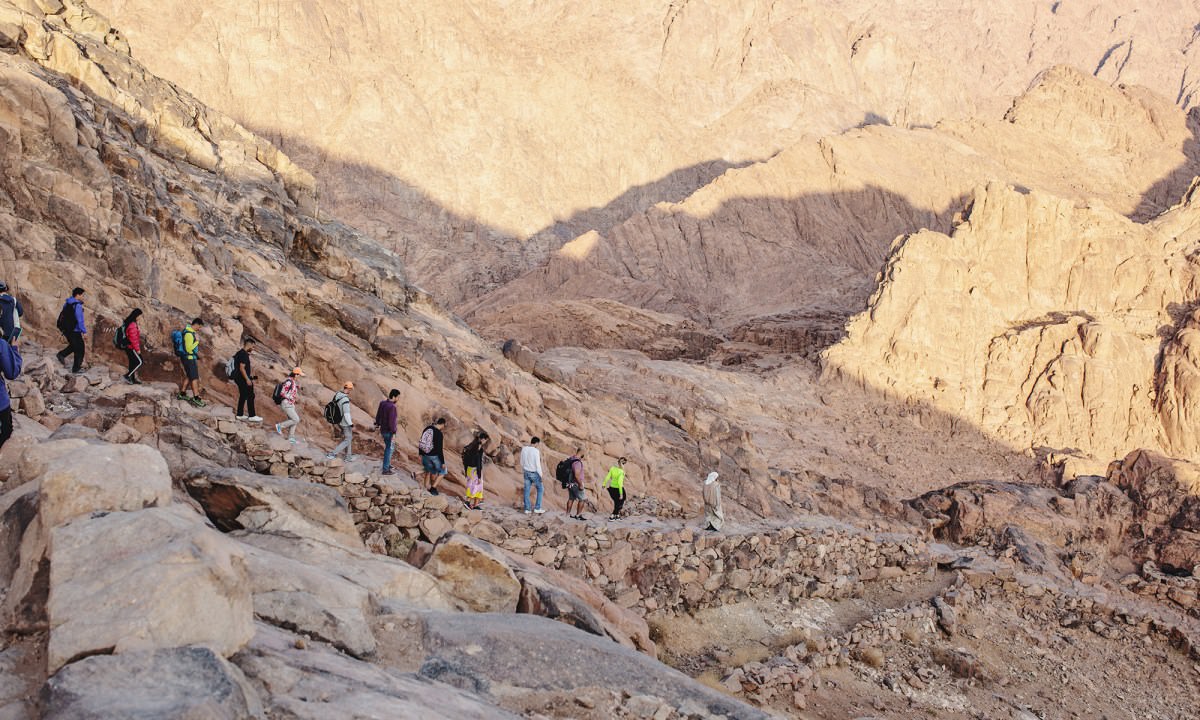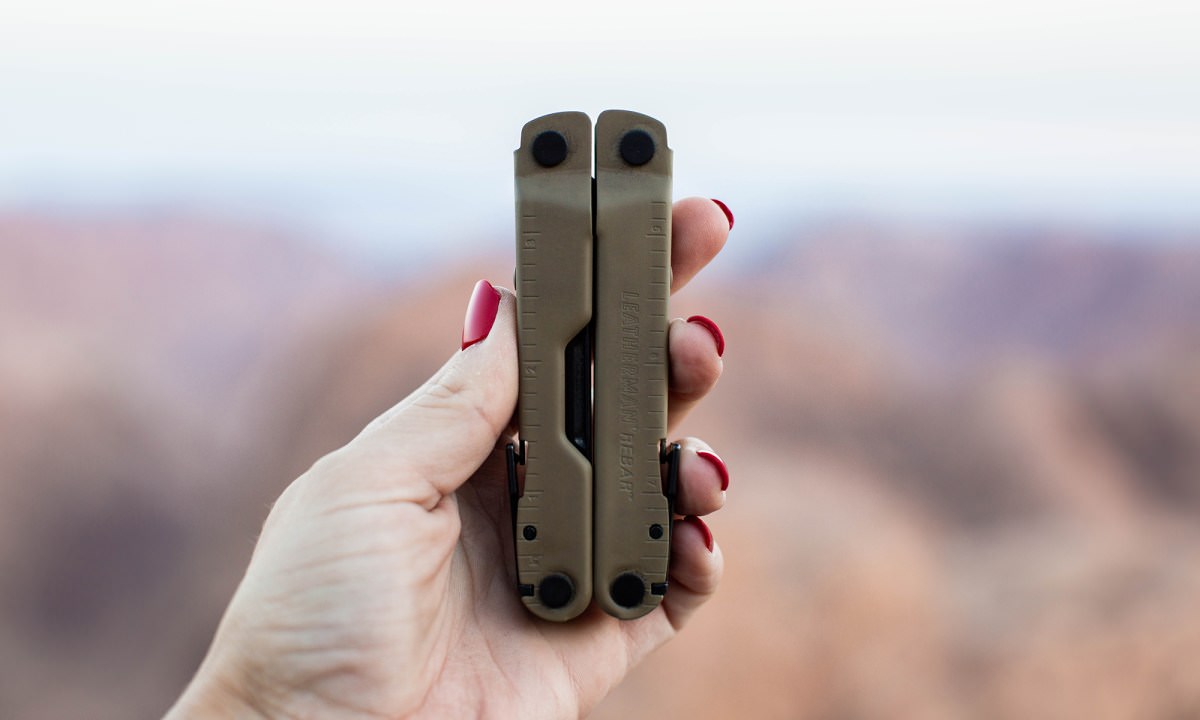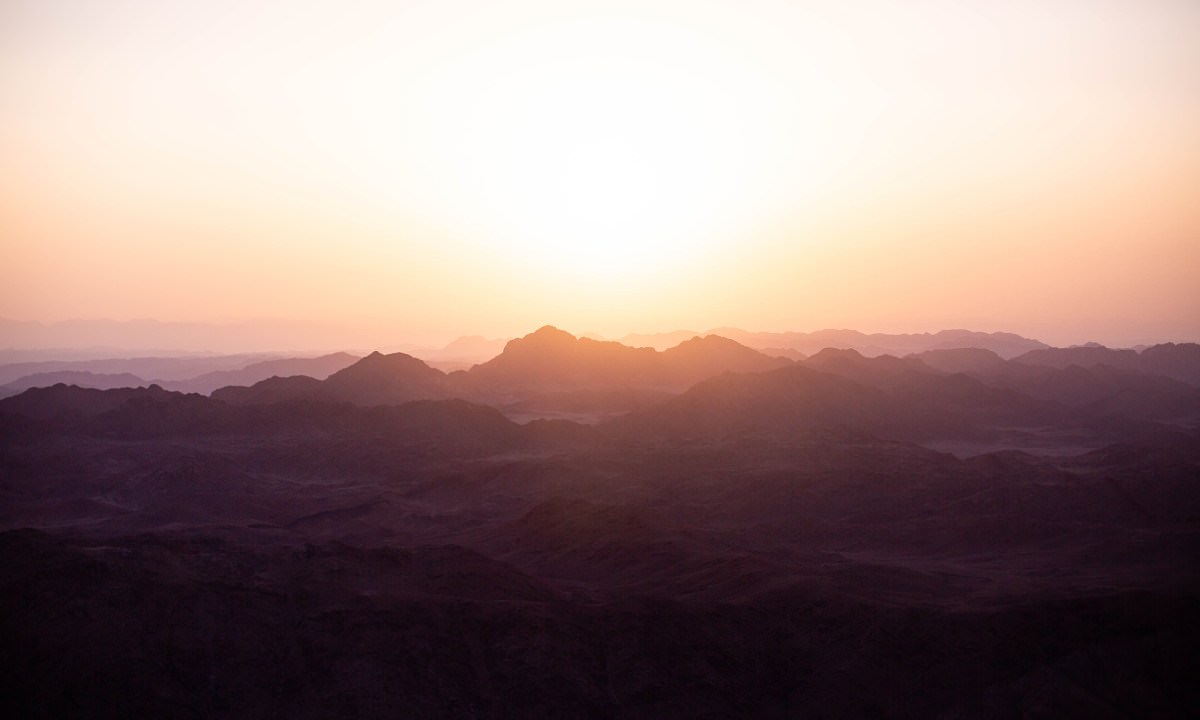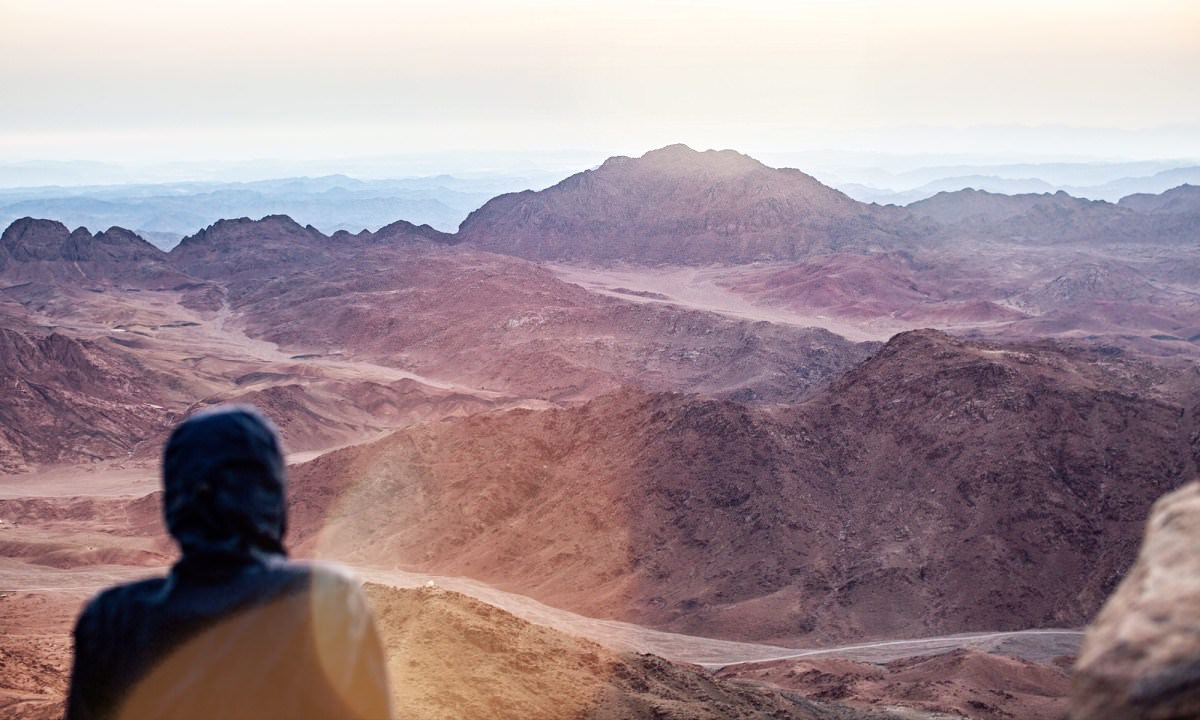Mount Sinai. It’s one of the most sacred places on earth.
It’s where many faiths (Christians, Judaeans, and Muslims) believe that Moses received the Ten Commandments. And whether you’re a religious person or not, there’s no denying that there’s something magical to this mountain—a mountain that sits 7,497 feet above sea level on Egypt’s Sinai Peninsula.
So, when I found myself in Dahab, a city on the Gulf of Aqaba side of Egypt’s Red Sea, a place where I was mostly planning to spend my days diving and exploring the nearby canyons, I knew I had to figure out a way to do this hike as soon as I learned about it. And not just because I was told about it from a friend that knows the way I travel and the adventures that I often seek out, but because I was told how hard it was to get to the mountain, and how challenging it was to make the climb.
So, the mission to get to Mount Sinai was officially on.

But, let me back up for a minute and provide a little background on the Sinai Peninsula first, to give more context to this adventure.
The reality of this part of Egypt is that it’s had a rough few years, plagued by resort bombings and an airline bombing as recently as 2015. It’s not a part of the world that most people are willingly heading to. But for me, a travel journalist, I had to see what it was like to travel here for myself. Was it as empty as I’ve heard it was with the United Kingdom and Russian banning flights into Sharm El Sheikh, the main airport on the peninsula? Was it as scary as I was told it would be to travel as a solo female traveler?
(Short answers: it wasn’t empty, it wasn’t full. And no, it was not scary to travel here alone as a female.)
But most importantly, was it safe to be here?
Well, yes. And no.
There’s still a tension here. It’s in the air. There are military checkpoints on the roads and metal detectors and bag screenings at every site you visit—and not just in Dahab and the Sinai Peninsula, but in all of Egypt. The pyramids in Giza, the Temple of Luxor, the Valley of the Kings—everywhere.
And this is exactly what I encountered on my way from Dahab to Mount Sinai. Five checkpoints in total (including one that required I show my passport) during our two-hour drive, which we set out on at 11 pm at night. Packed into a van with 12 other tourists (five of which were Egyptians holidaying in Dahab, the others being Spanish and Japanese, plus one other American and one solo Canadian).
Our driver didn’t speak English, and we’d soon learn that neither did our faithful guide. Without the five Egyptian boys from Alexandria (all in their early 20s) who happily took on the role as translators, the hike would have been a much more patience-testing experience.
Finally arriving at 2 am and going through security—a metal detector and bag search—to have them pull out my Leatherman Rebar, the tool I’d been traveling with (and relying) on during my six-week journey through Azerbaijan, Georgia, Turkey and now Egypt, I was almost positive I was about to head to Egyptian jail. They examined the multi-tool, looking it over but not opening it, eventually deeming me (and my multi-tool) not a threat. My Rebar and I were free to hike the mountain. To say I breathed a sigh of relief as I walked away would be an understatement.

So, it’s just after 2 am and time to trek almost 8,000 feet in the dark. There’s a clear path (which was a pleasant surprise) to the peak, and technically it would be easy to do this hike without a guide. However, I’m not sure that I would recommend it—especially since a guide is relatively cheap. (Transportation from and back to my hotel, plus the guide only cost $30.)
Making our way up the mountain in the middle of the night, some of the group only using the light of the almost-full moon to guide their way, myself using the flash on my mobile phone, it took the group about three hours in total to make the arduous climb. We went at a leisurely pace, taking plenty of breaks along the way, which turned out to be a nice opportunity to chat with some of the other group members and learn why they were doing the hike, and what brought them to the peninsula.
With the mountain unknowingly looming above us, the final push—and the part that I’d realize was why everyone said that the hike was so hard—consisted of 750 steps, straight up.
Without the pressure to be the first to the top, I took my time climbing step by step with my new companions, each of us supporting each other as we pushed our limits to get to the peak.
Reaching the top of the mountain just as the sun slowly started to make its way over the horizon, revealing a 360-view of the surrounding mountains is a scene that will forever be ingrained in my memory. It’s not until you’re here that you realize the vastness of the area. And to see it from this perspective, one which few people will ever have the chance to do, is simply breathtaking.
Embraced by the crisp air at this elevation, I sat there simply just trying to take it all in. It’s undeniable that there’s some sort of energy here—but whether that was my adrenaline speaking or there’s really some sort of magic to the mountain, I may never know. And I don’t really need to. Some things are better left unanswered.

And while this adventure was one that I’ll never forget, one that I’ll always be grateful I was able to experience, this isn’t an adventure—or even a destination—for everyone. And that’s okay. Travel means something different to everyone, and just because this is something I was drawn to, doesn’t mean you should feel bad if you’re not. Embrace your travel style and do what makes you happy (and makes you comfortable)—no matter what that might be.
Travel safely, Leatherman family.
